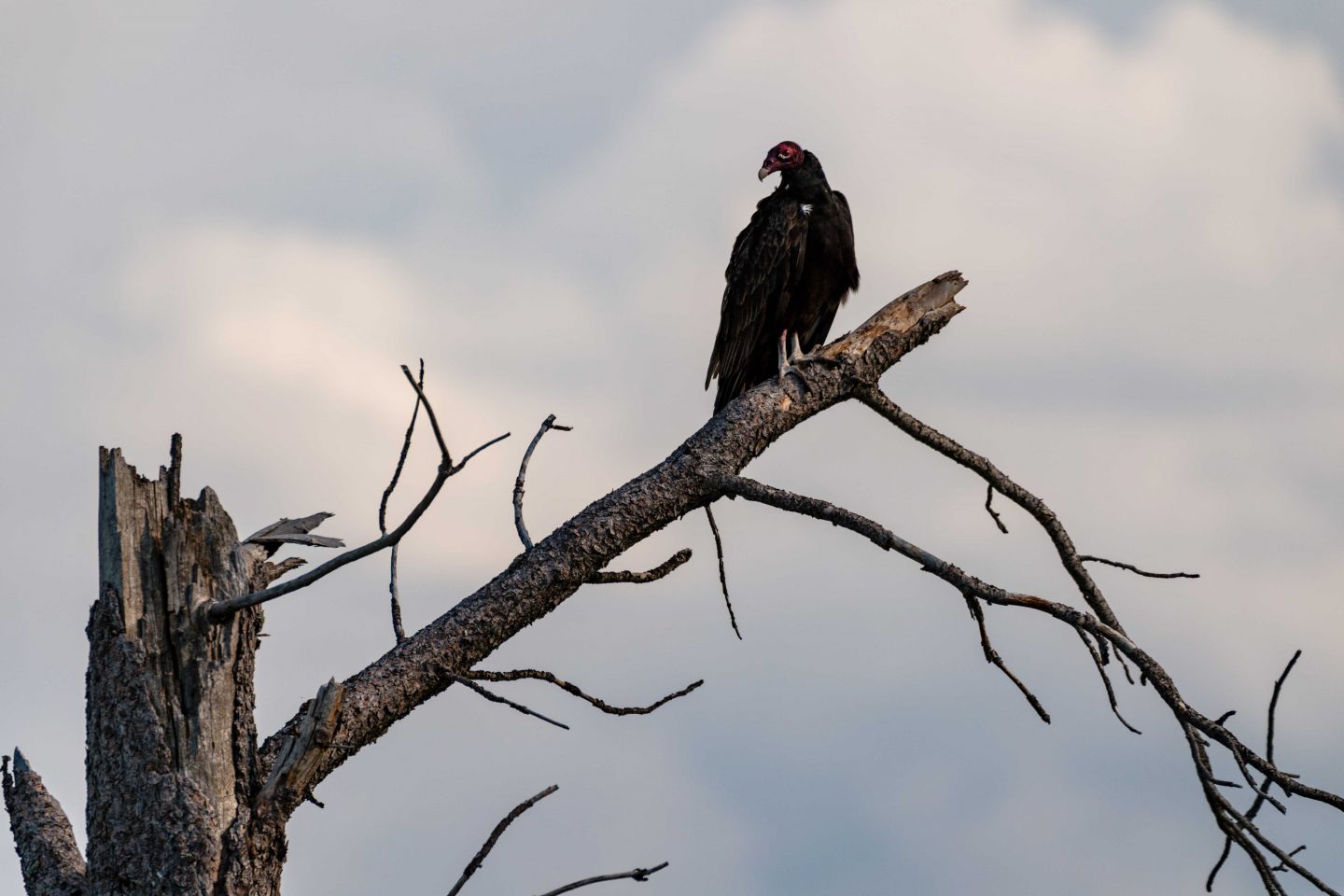
By Justin Haag
A friend likened them to the famed “Swallows of Capistrano.” It’s once again a joy to see the return of the migratory “Vultures of Chadron.”
Our house is on a hill, so we get a good view of the turkey vultures as they fly over the city. Occasionally, they “buzz the tower,” flying just feet above our house. I captured this photo by stepping out the back door last week. Not great, but not bad considering how little effort I put into it.
As one who photographs wildlife, I sometimes get asked what animal I’d like to be. After considerable thought, this is the species.
For one, the big group with its biker gang vibe seems to be having fun as individuals, effortlessly catching wind gusts and thermals to soar above the city with minimal wingbeats, assumedly searching for roadkill or some other dead thing to eat.
“Roadkill? Yuck,” you might say. It’s certainly no deal-breaker. Unlike other wildlife species deemed to be more charismatic, vultures aren’t obligated to expend energy in the uncertain task of chasing and killing dinner. Sure, roadkill may not be attractive to us, but they seem to like it, and personal taste is what matters.
Some say they’re ugly, but let’s not forget that these birds with their massive wingspans are often mistaken for the more esteemed species known as eagles. Of course, beauty is in the eye of the beholder, and apparently these birds look good enough to one another to procreate. Heck, they might think we’re ugly.
Finally, I won’t complain about spending winters in the South.
Yes, vultures do leave considerable droppings below their roosts, and they can deface buildings and other structures if they congregate above them. Note, though, that a vulture superpower is the strong acid in its digestive system kills most disease-causing bacteria and viruses. Therefore, the feces is relatively “clean.”
Other than some unsightly poop, vultures do more good than harm surely even from the most judicious humans’ standpoint. No predation of livestock and other wildlife. No damage to crops and garden. Just out there cleaning up dead things.
Just as the people of San Juan Capistrano, California, created a big celebration around the annual return of cliff swallows, I suggest my fellow citizens soar in merriment at the return of the revered (at least by me) Vultures of Chadron — or the turkey vultures of wherever else you may be seeing them throughout their expansive range. They deserve a warm welcome.
